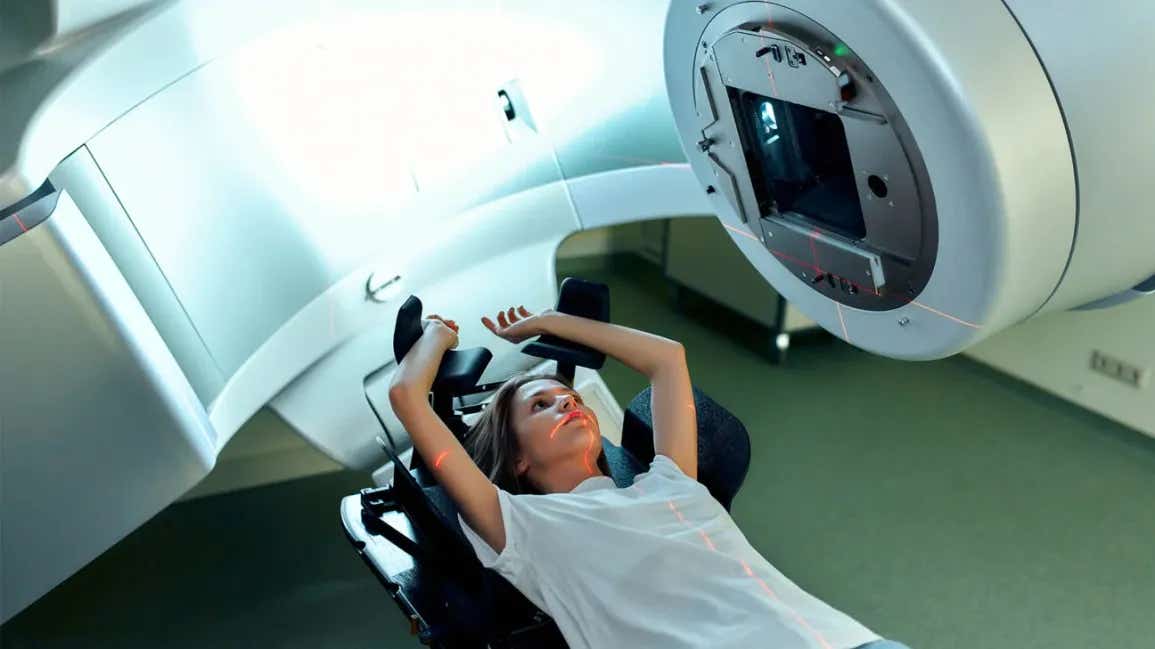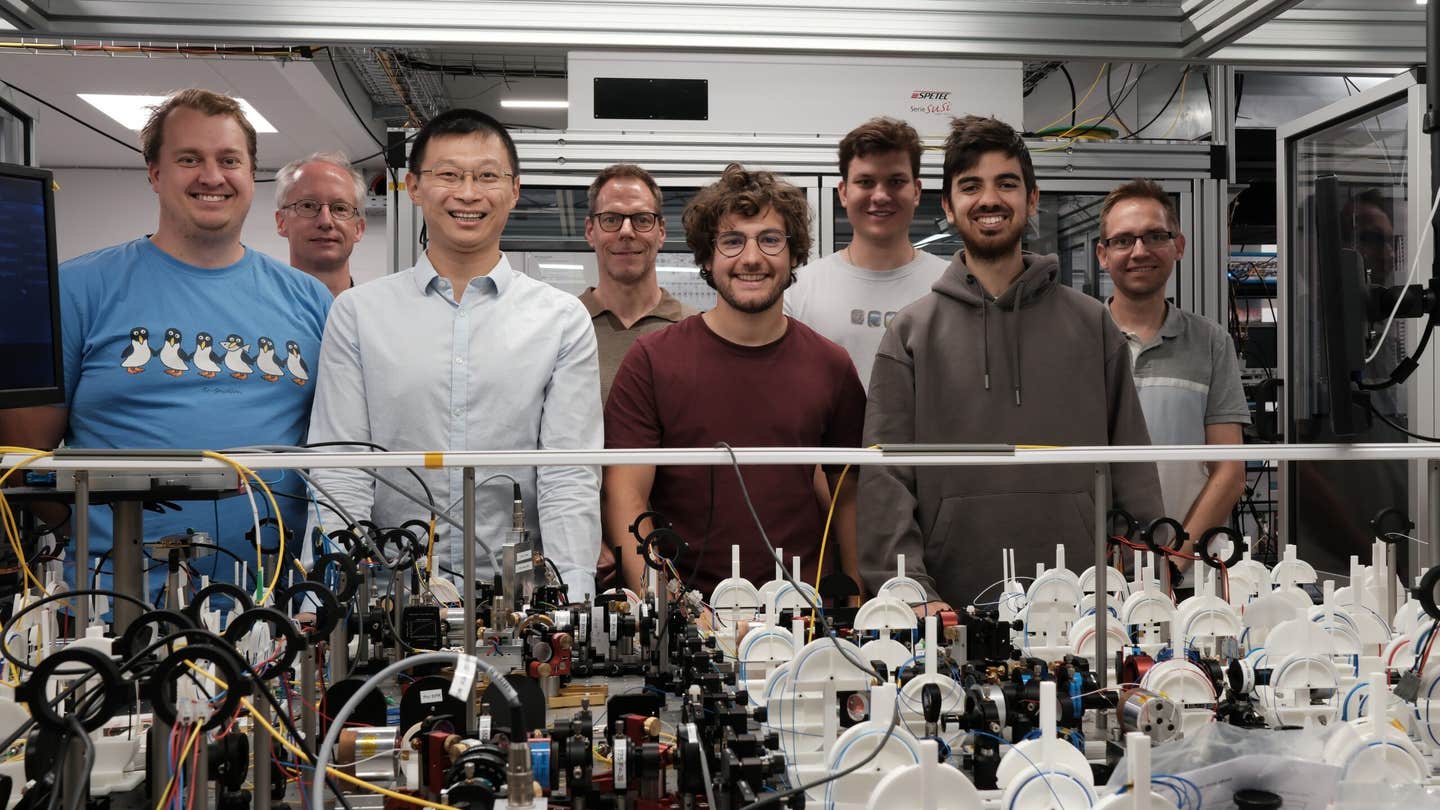Researchers create light-activated ‘smart’ bomb to destroy breast cancer
A new light-activated therapy uses cyanine-carborane salts to destroy breast cancer cells with fewer side effects.

A team of scientists created a new light-activated therapy that targets breast cancer cells while sparing healthy tissue. (CREDIT: Valerii Apetroaiei / Getty Images)
In a major step forward for cancer treatment, researchers have developed a new type of “smart” chemical that attacks aggressive breast cancer cells using light while sparing healthy tissue. The approach, called photodynamic therapy (PDT), has existed for decades. But this new version uses powerful light-activated compounds designed to be more precise, less toxic, and far more effective.
PDT works by combining three things: a light-sensitive drug, oxygen, and targeted light. Once the drug reaches the cancer cells, light triggers a reaction that generates toxic molecules to kill those cells. Yet traditional PDT drugs come with serious downsides, including low tissue penetration, damage to healthy cells, and lasting skin sensitivity. That’s why this new development is so exciting.
A smarter way to kill cancer cells
The breakthrough came from a team of scientists at Michigan State University and the University of California, Riverside. They created special salts made by combining two molecules—positively charged cyanine dyes and negatively charged carborane clusters. These salts absorb near-infrared light, which can pass deeper into the body than visible light.
When these compounds reach a tumor and are activated by light, they behave like a guided missile. They kill cancer cells by generating reactive oxygen species, or ROS—molecules that damage cells from the inside out. Unlike earlier PDT drugs, these cyanine-carborane salts don’t harm surrounding healthy tissue or linger in the body, making them much safer for patients.
“These salts offer a targeted option with reduced side effects for patients with aggressive breast cancer,” said Sophia Lunt, a biochemistry professor at Michigan State. “We expect this research will lead to safer and more effective therapies for patients with limited treatment options.”
Turning light into a “smart bomb”
The key lies in how the cyanine-carborane salts interact with cancer cells. When injected, they are absorbed mainly by cancerous tissue and barely by healthy cells. Once exposed to near-infrared light, the compounds activate and begin producing ROS. These harmful species set off a chain reaction that damages cancer cell DNA, disrupts critical cell functions, and triggers cell death.
Related Stories
This method also hits cancer cells at their most dangerous phase—when they’re actively spreading. Researchers showed that the salts didn’t just destroy primary breast tumors in mice. They also suppressed metastasis, the process where cancer spreads to new parts of the body.
“Our work offers an effective treatment for aggressive breast cancers,” said Amir Roshanzadeh, a graduate student and lead author of the new study. “It also opens the door to breakthroughs for treating additional cancers and targeted drug delivery.”
Solving the biggest problems of traditional PDT
The discovery solves some of the worst limitations of older PDT drugs. One common drug used in PDT, called Photofrin, can stay in the body for weeks. During that time, patients are extremely sensitive to light. Even brief exposure to indoor lighting or sunlight can cause painful burns or blistering.
“After traditional PDT treatment, the patient has to stay in the dark for two-three months because even low levels of light will cause their skin to become blistered and burned,” said Hyllana Medeiros, a postdoctoral researcher at Michigan State who helped lead the animal studies.
The new cyanine-carborane compounds offer a cleaner solution. They’re more chemically stable, better at targeting tumors, and less likely to stick around in the skin or other healthy tissues. The result is a more focused and safer treatment.
These results come from rigorous lab tests using human and mouse breast cancer cells, as well as live animal models. The researchers used an advanced breast cancer mouse model in which tumor cells were injected into the mammary fat pads of female mice.
The model closely mimics how breast cancer behaves in the human body. It also gives scientists a way to test how treatments work within the immune system’s natural response.
What makes carborane salts so special?
Carborane anions are a unique class of molecules. They belong to a group called borohydride clusters, which are known for their chemical stability and resistance to reactions. They’re made of boron, carbon, and hydrogen atoms arranged in geometric patterns like spheres and antiprisms. These shapes allow them to carry electric charge evenly across the molecule, making them extremely inert and safe to use in the body.
Unlike many other anions used in medicine, carboranes don’t absorb light in the visible or near-infrared range. This makes them perfect partners for light-sensitive cyanine dyes. By pairing the two, researchers found they could control how the drug behaves, fine-tuning how toxic it is in light and darkness.
Carborane’s unique features also help keep the compound from reacting with unintended targets. Their structure is modular, meaning scientists can modify them to improve safety, boost effectiveness, or adjust the energy levels of the cyanine dye. Early studies have shown that carborane clusters are about as toxic as table salt when tested in rats, a good sign for future safety testing in humans.
Although carboranes have been used before in other therapies—like boron neutron capture therapy (BNCT), which kills cancer cells using neutron beams—their use in PDT is brand new. This study marks the first time they’ve been used to adjust how photosensitizers behave in light-based treatments.
Building the next generation of cancer therapies
The research team behind the new PDT salts was led by a husband and wife duo, Sophia and Richard Lunt, both professors at Michigan State. They partnered with Vincent Lavallo, a chemistry professor at UC Riverside, to combine their knowledge of cancer biology, materials science, and chemistry. Their collaboration made it possible to design a treatment that’s precise, stable, and ready for future testing.
“Truly novel discoveries that enable solutions to problems as complex as cancer require multidisciplinary teams like ours,” said Richard Lunt. “This research is a perfect demonstration of what can be achieved when you combine several different researchers with vastly different backgrounds spanning cancer biology, chemistry and materials science engineering; good things happen.”
The team published their findings in Angewandte Chemie, a leading journal of the German Chemical Society. Their next steps include testing the treatment on other types of cancer and exploring how the technology might be used to deliver drugs directly to tumors.
While more studies are needed before this therapy reaches clinical trials, the outlook is bright. Cyanine-carborane salts may be the key to unlocking more targeted and less harmful cancer treatments, especially for patients who don’t respond to current options.
Note: The article above provided above by The Brighter Side of News.
Like these kind of feel good stories? Get The Brighter Side of News' newsletter.



